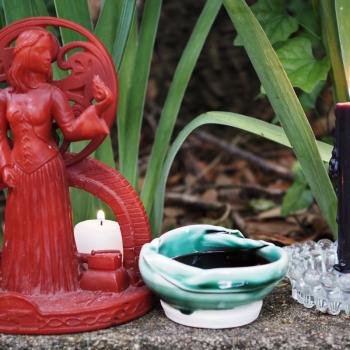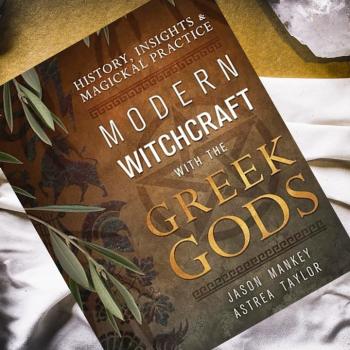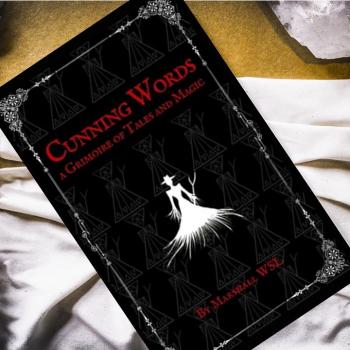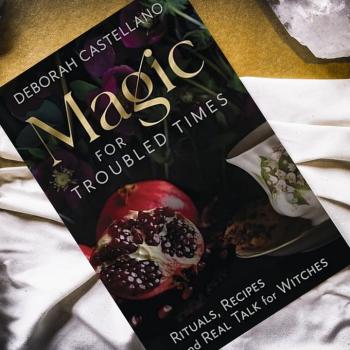“Here is no protective circle, no prayers, no names of power; we have left the strained company of the magicians and are back in the countryside where the fairies are natural company.” – K. Briggs, in The Anatomy of Puck chapter 8, discussing a folk ritual to obtain a fairy companion

There is a long history of witches working with fairies in various ways, both learning from them and being in service to them. In modern paganism we more often see this relationship played out very differently, with the Good Folk being approached from a more ceremonial magic perspective or treated as a kind of spirit guide or ally. When we look to folklore and early modern witchcraft we see a different picture and it is this one that I base my own personal practice on.
There are accounts from the Scottish witchcraft trials where accused witches talk about encountering fairies, or even of fairies seeking them out, and offering to teach them and work with them if the human would make an oath to the Queen of fairy or her representative. This oath was nothing to be taken lightly but was a serious pledge to the Queen that involved renouncing one’s previous faith and exchanging it for loyalty to the monarch of the Otherworld. The Queen might then give the human witch a fairy familiar* which was a fairy who would act as a go-between for the witch and the fairies in general.
The witch would be expected to come when summoned to attend gatherings of the fairy Queen’s Court and would be taught by her or the familiar, some of them earning great renown as cunningfolk from these teachings, and in some cases being given other things as well. This was not a thing done by the human’s will or choice but was something that happened instead when the fairies reached out and directly engaged with a person on their own terms. The dynamics of this engagement then are very different from what we see in the grimoire tradition where a fairy might be invoked much as any other spirit could be using a precise ritual format and for the human’s purpose.
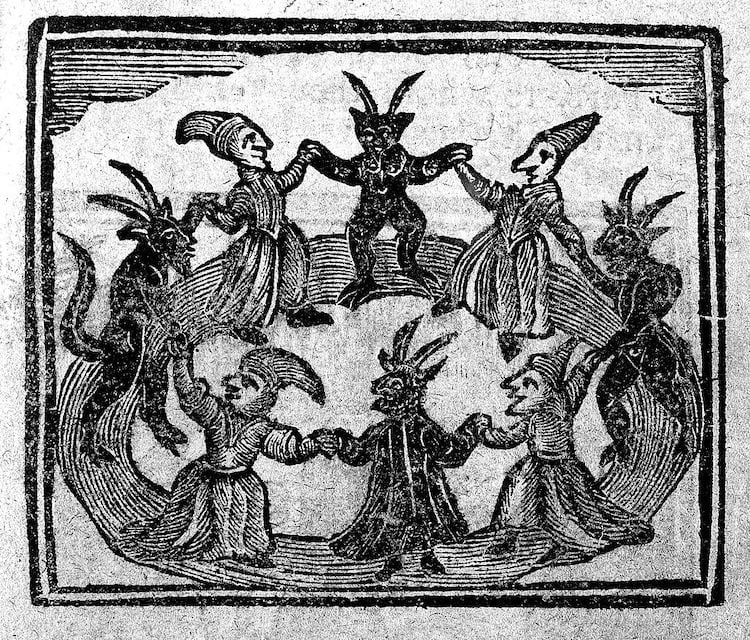
When a human, witch or magician, is the one in control the situation is of course very much different although one might argue no less risky. The risk involved is simply of another nature. There is a corpus of grimoire material that deals with conjuring and commanding fairies, which is part of what Briggs was referring to in the opening quote of this article, and these rituals include specific suggestions for how to invoke and bind fairies. There are also hints in some of the ballad material, like the ballad of Tam Lin, that a compass (circle) of holy water will protect a person inside it from the Good Neighbours indicating another means by which a person might use ritual to insulate themselves from the fairies. For those seeking to call the Othercrowd up and command them or bind them protection is certainly an essential component as they will not be pleased when they arrive.
And therein lies the crux of the difference between the two approaches and why perhaps we see the idea of more ritualized work with fairies requiring protective spaces and names of power while more intuitive approaches do not. To use a compass is to be in control; to walk without one is to acknowledge that you aren’t in control. This is wild witchcraft that walks through the dark woods and knows that all life is both beautiful and precarious. It is a path that one walks without any assurance of safety and sometimes without any clarity on where exactly the path is leading. Sometimes there isn’t even a path to follow, just trees and darkness. But it is a witchcraft that is full of wonderful and uncanny things and for people who are drawn to it, it is a witchcraft that feels alive and inspired.

I opened this article with a quote from Katherine Briggs because I feel that it perfectly sums up the dichotomy that exists among people who deal with fairies. There are those who approach them with protective circles, prayers, and names designed to control and there are those who approach them without those things, but perhaps with an offering and a good word. How they are approached sets the tone for the entire relationship that may follow, and it is understandable that many would rather choose to control the situation than risk being controlled by it. But when you are in control you will only ever gain as much as you can bargain for, and with Themselves that will never be as much as you think it is. When you are willing to turn yourself over to them – and I don’t discount exactly what that means or why the Church saw it as the same thing as selling your soul to the Devil – then you will gain as much as they are willing to give you.
And they will always freely give more than they ever will give by compulsion.
*this is a complicated subject in itself. All I’ll say here is fairy familiars were sometimes dead humans who seemed to have been taken by the fairies and usually had a connection to the witch, perhaps as a blood relative.







